Mixed Temporal Measurement of Land Use Based on AOI Data and Thermal Data
Abstract
1. Introduction
2. Materials and Methods
2.1. Study Area and Data
2.2. Framework for Characterizing Mixed Land-Use Patterns
2.3. Methodology
2.3.1. Business Hours Analysis Model
- (1)
- If there are adjacent time points, keep the previous one;
- (2)
- If there are adjacent time points, keep the one that is next to it;
- (3)
- If the first time point is a closing time and the last time point is an opening time, i.e., , it is considered an inter-night case and is retained;
- (4)
- Delete if there is only a single closing time point or opening time point.
2.3.2. Construction of the Indicator System
- Temporal Diversity Index (TDI) and Daily Temporal Diversity Index (DTDI)
- 2.
- Diversity Time Entropy Index (TEI)
3. Results
3.1. Spatial Distribution of Block Functions
3.2. Analysis of Business Hours Model
3.3. Spatial Distribution of TDI
3.4. Spatial and Temporal Mixing Patterns of Land Use in Xi’an City
- Quadrant I (high DTDI, high TEI): These blocks have high diversity and a more balanced distribution of temporal diversity, suggesting a more reasonable schedule of business hours and a variety of functional types;
- Quadrant II (high DTDI, low TEI): This type of block has high diversity, but the distribution of temporal diversity is uneven, and may be characterized by a concentration of business activities or functional uses at specific times of day, rather than a balanced distribution throughout the day;
- Quadrant III (low DTDI, low TEI): This represents areas with low overall diversity and a more homogenous distribution of temporal diversity, which may be dominated by single-function blocks, such as purely residential areas or areas with relatively monotonous functions;
- Quadrant IV (low DTDI, high TEI): Despite low overall diversity, the temporal diversity is more evenly distributed, suggesting that the area needs to be improved in terms of its type of function, but it has a more stable pattern of business hours.
4. Discussion
4.1. Difference Between Temporal Diversity and Diversity Calculated in the Traditional Way
4.2. Model Transferability
5. Conclusions
- (1)
- TDI and DTDI indicators are more time-sensitive than traditional diversity measures, which often overestimate the diversity of land use mix. By incorporating the temporal availability of land use, TDI and DTDI provide a more accurate measurement of land use mix;
- (2)
- The opening times of business and industrial land uses in Xi’an exhibit a unimodal distribution, with a peak around 6:00. In contrast, the closing times show a multimodal distribution, with prominent peaks at 1:00, 13:00, 19:00, and 21:00. At the block level, land use business patterns can be categorized into two types: daytime–active (associated with daytime work activities) and nighttime–active (dominated by nighttime commercial activities);
- (3)
- The business hours of business and industrial land uses in Xi’an are generally reasonable. However, the combination of functional types still leaves room for optimization. Most blocks in Xi’an, particularly those dominated by residential functions, typically show lower DTDI and higher TEI, indicating that the business hours for business and industrial land uses within these areas are appropriately set, yet the overall functional diversity remains insufficient. Moreover, the introduction of business functions can enhance the overall diversity of residential-dominated blocks.
Author Contributions
Funding
Data Availability Statement
Conflicts of Interest
References
- Hu, T.; Yang, J.; Li, X.; Gong, P. Mapping Urban Land Use by Using Landsat Images and Open Social Data. Remote Sens. 2016, 8, 151. [Google Scholar] [CrossRef]
- Zhuo, Y.; Jing, X.; Wang, X.; Li, G.; Xu, Z.; Chen, Y.; Wang, X. The Rise and Fall of Land Use Mix: Review and Prospects. Land 2022, 11, 2198. [Google Scholar] [CrossRef]
- Ma, Y.; Liu, S.; Xue, G.; Gong, D. Soft Sensor with Deep Learning for Functional Region Detection in Urban Environments. Sensors 2020, 20, 3348. [Google Scholar] [CrossRef] [PubMed]
- Congress for the New Urbanism. Charter of the New Urbanism; Congress for the New Urbanism: New York, NY, USA, 2013. [Google Scholar]
- Smart Growth Principles-Mixed Land Uses. Available online: https://www.epa.gov/smartgrowth/about-smart-growth (accessed on 1 June 2025).
- Song, Y.; Merlin, L.; Rodriguez, D. Comparing measures of urban land use mix. Comput. Environ. Urban Syst. 2013, 42, 1–13. [Google Scholar] [CrossRef]
- Gehrke, S.R.; Clifton, K.J. An activity-related land use mix construct and its connection to pedestrian travel. Environ. Plan. B Urban Anal. City Sci. 2019, 46, 9–26. [Google Scholar] [CrossRef]
- Duncan, M.J.; Winkler, E.; Sugiyama, T.; Cerin, E.; Dutoit, L.; Leslie, E.; Owen, N. Relationships of Land Use Mix with Walking for Transport: Do Land Uses and Geographical Scale Matter? J. Urban Health 2010, 87, 782–795. [Google Scholar] [CrossRef]
- Yue, Y.; Zhuang, Y.; Yeh, G.O.A. Measurements of POI-based mixed use and their relationships with neighbourhood vibrancy. Int. J. Geogr. Inf. Sci. 2017, 31, 658–675. [Google Scholar] [CrossRef]
- Taleai, M.; Sharifi, A.; Sliuzas, R.; Mesgari, M. Evaluating the compatibility of multi-functional and intensive urban land uses. Int. J. Appl. Earth Obs. Geoinf. 2007, 9, 375–391. [Google Scholar] [CrossRef]
- Tian, L.; Liang, Y.; Zhang, B. Measuring residential and industrial land use mix in the peri-urban areas of China. Land Use Policy 2017, 69, 427–438. [Google Scholar] [CrossRef]
- Zhuo, Y.; Zheng, H.; Wu, C.; Xu, Z.; Li, G.; Yu, Z. Compatibility mix degree index: A novel measure to characterize urban land use mix pattern. Comput. Environ. Urban Syst. 2019, 75, 49–60. [Google Scholar] [CrossRef]
- Zhao, X.; Xia, N.; Li, M. 3-D multi-aspect mix degree index: A method for measuring land use mix at street block level. Comput. Environ. Urban Syst. 2023, 104, 102005. [Google Scholar] [CrossRef]
- Kwan, M.P.; Richardson, D.; Wang, D.; Zhou, C. Beyond Space (As We Knew It): Toward Temporally Integrated Geographies of Segregation, Health, and Accessibility. Ann. Assoc. Am. Geogr. 2013, 103, 1078–1086. [Google Scholar] [CrossRef]
- Wang, Y.D.; Wang, T.; Tsoh, M.H.; Li, H.; Jiang, W.; Guo, F.Q. Mapping Dynamic Urban Land Use Patterns with Crowdsourced Geo-Tagged Social Media (Sina-Weibo) and Commercial Points of Interest Collections in Beijing, China. Sustainability 2016, 8, 1202. [Google Scholar] [CrossRef]
- Jacobs-Crisioni, C.; Rietveld, P.; Koomen, E.; Tranos, E. Evaluating the Impact of Land-Use Density and Mix on Spatiotemporal Urban Activity Patterns: An Exploratory Study Using Mobile Phone Data. Environ. Plan. A Econ. Space 2014, 46, 2769–2785. [Google Scholar] [CrossRef]
- Li, M.; Shen, Z.; Hao, X. Revealing the relationship between spatio-temporal distribution of population and urban function with social media data. GeoJournal 2016, 81, 919–935. [Google Scholar] [CrossRef]
- Sulis, P.; Manley, E.; Zhong, C.; Batty, M. Using mobility data as proxy for measuring urban vitality. J. Spat. Inf. Sci. 2018, 16, 384. [Google Scholar] [CrossRef]
- Li, X.; Hu, T.; Gong, P.; Du, S.; Chen, B.; Li, X.; Dai, Q. Mapping Essential Urban Land Use Categories in Bejing with a Fast Area of Interest (AOI)-Based Method. Remote Sens. 2021, 13, 477. [Google Scholar] [CrossRef]
- Li, M.; Zhu, N. Research on the Method of Artificial Intelligence for Identifying Urban Land-Use Types Based on Areas of Interest (AOI) and Multi-Source Data. Land 2025, 13, 2040. [Google Scholar] [CrossRef]
- Mo, Y.; Huang, Y.F.; Zhong, R.F.; Wang, B.; Guo, Z.C. Investigating the Effects of 2D/3D Urban Morphology on Land Surface Temperature Using High-Resolution Remote Sensing Data. Buildings 2025, 15, 1256. [Google Scholar] [CrossRef]
- Lv, H.; Wu, Z.N.; Guan, X.J.; Meng, Y.; Wang, H.L.; Zhou, Y.H. Threshold effect of data amount and grid size on urban land use type identification using multi-source data fusion. Sustain. Cities Soc. 2023, 98, 104855. [Google Scholar] [CrossRef]
- Dovey, K.; Pafka, E. What is functional mix? An assemblage approach. Plan. Theory Pract. 2017, 18, 249–267. [Google Scholar] [CrossRef]
- Zheng, H.Y.; Zhuo, Y.F.; Xu, Z.G.; Wu, C.F.; Huang, J.H.; Fu, Q. Measuring and characterizing land use mix patterns of China’s megacities: A case study of Shanghai. Growth Change 2021, 52, 2509–2539. [Google Scholar] [CrossRef]
- Jones, R. Landscape ecology: In theory and practice, pattern and process. Geography 2002, 87, 369–370. [Google Scholar]
- Frank, L.D.; Pivo, G. Impacts of Mixed Use and Density on The Utilization of Three Modes of Travel: The Single-Occupant Vehicle, Transit, and Walking. Transp. Res. Board. 1994, 1466, 44–52. [Google Scholar]
- Li, J.W.; Chen, Y.; Zhao, D.; Zhai, J.G. The Impact of Built Environment on Mixed Land Use: Evidence from Xi’an. Land 2024, 13, 2214. [Google Scholar] [CrossRef]
- Da Fontoura, L.C.; Kanashiroal, M.; Urbanoa, M.R. Comparing land use mix measures for different urban areas: An application in a Brazilian city. Urbe-Rev. Bras. Gest. Urbana. 2025, 17, 02023031. [Google Scholar] [CrossRef]
- Macqueen, J.B. Some Methods for Classification and Analysis of Multivariate Observations. Proc. Fifth Berkeley Symp. Math. Stat. Probab. 1967, 1, 281–297. [Google Scholar]
- Zhang, M.Z.; Zhao, P.J. The impact of mixed land-use on residents’ travel energy consumption: New evidence from Beijing. Transp. Res. Part D-Transp. Environ. 2016, 57, 224–236. [Google Scholar] [CrossRef]
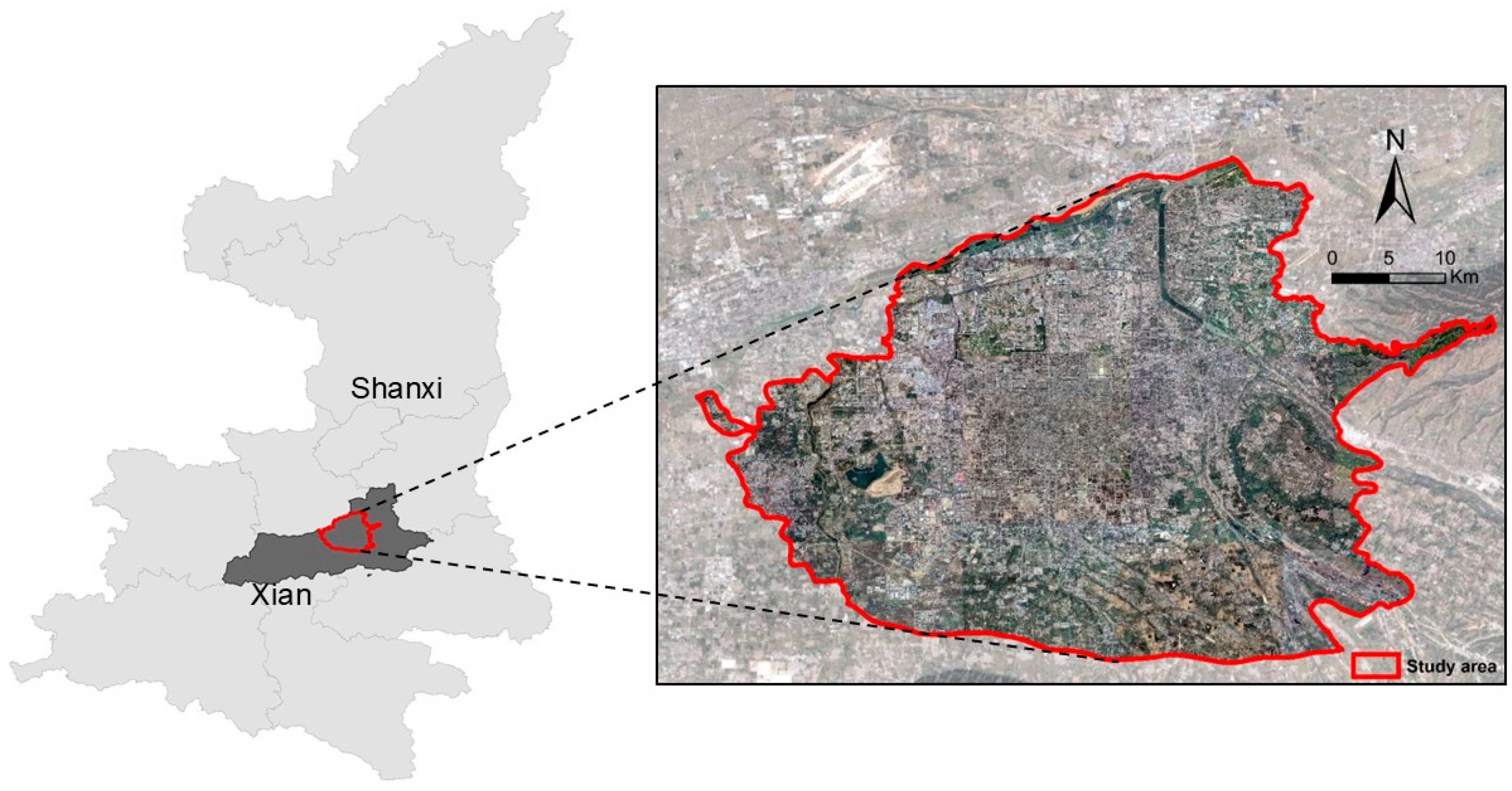
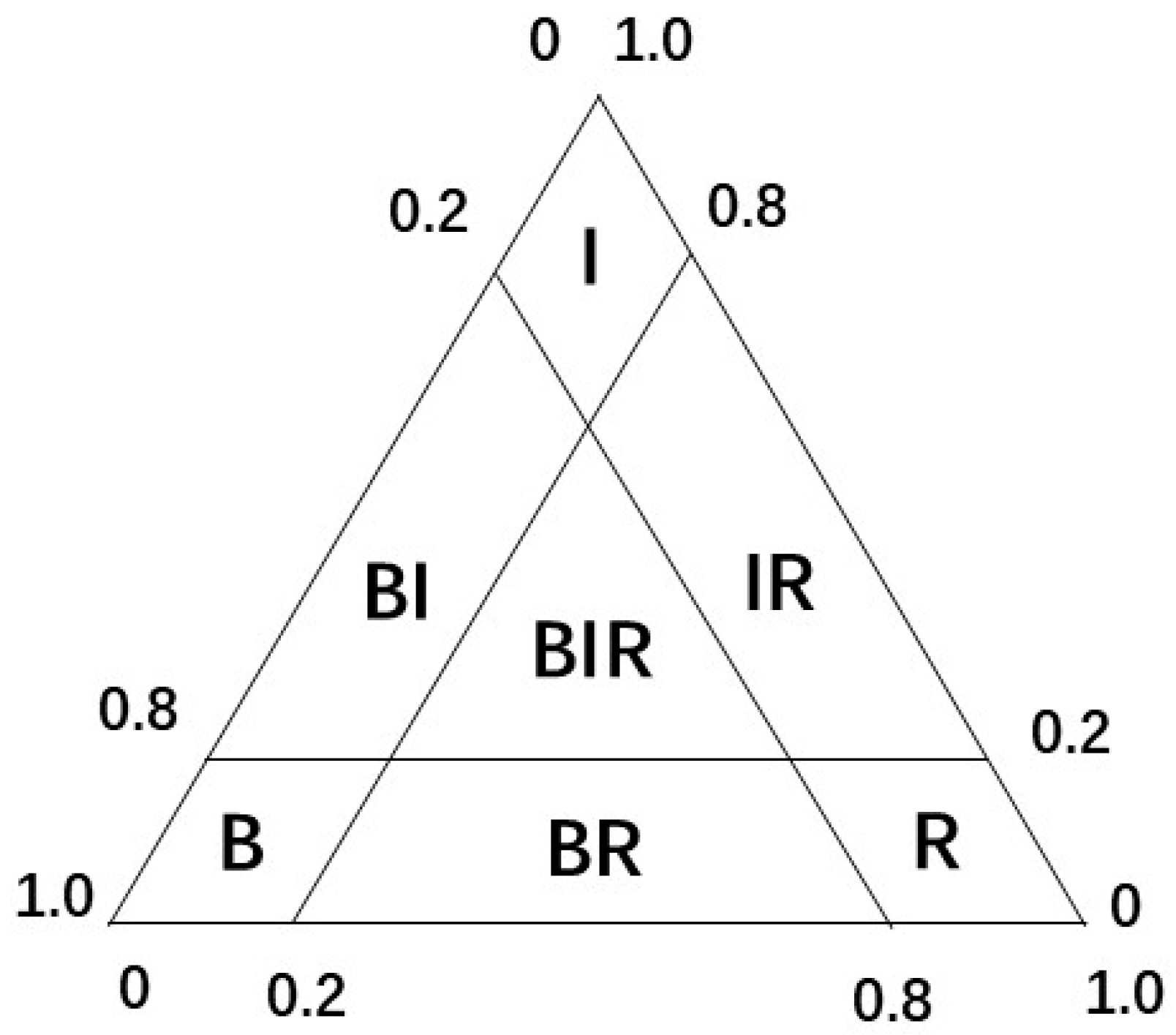
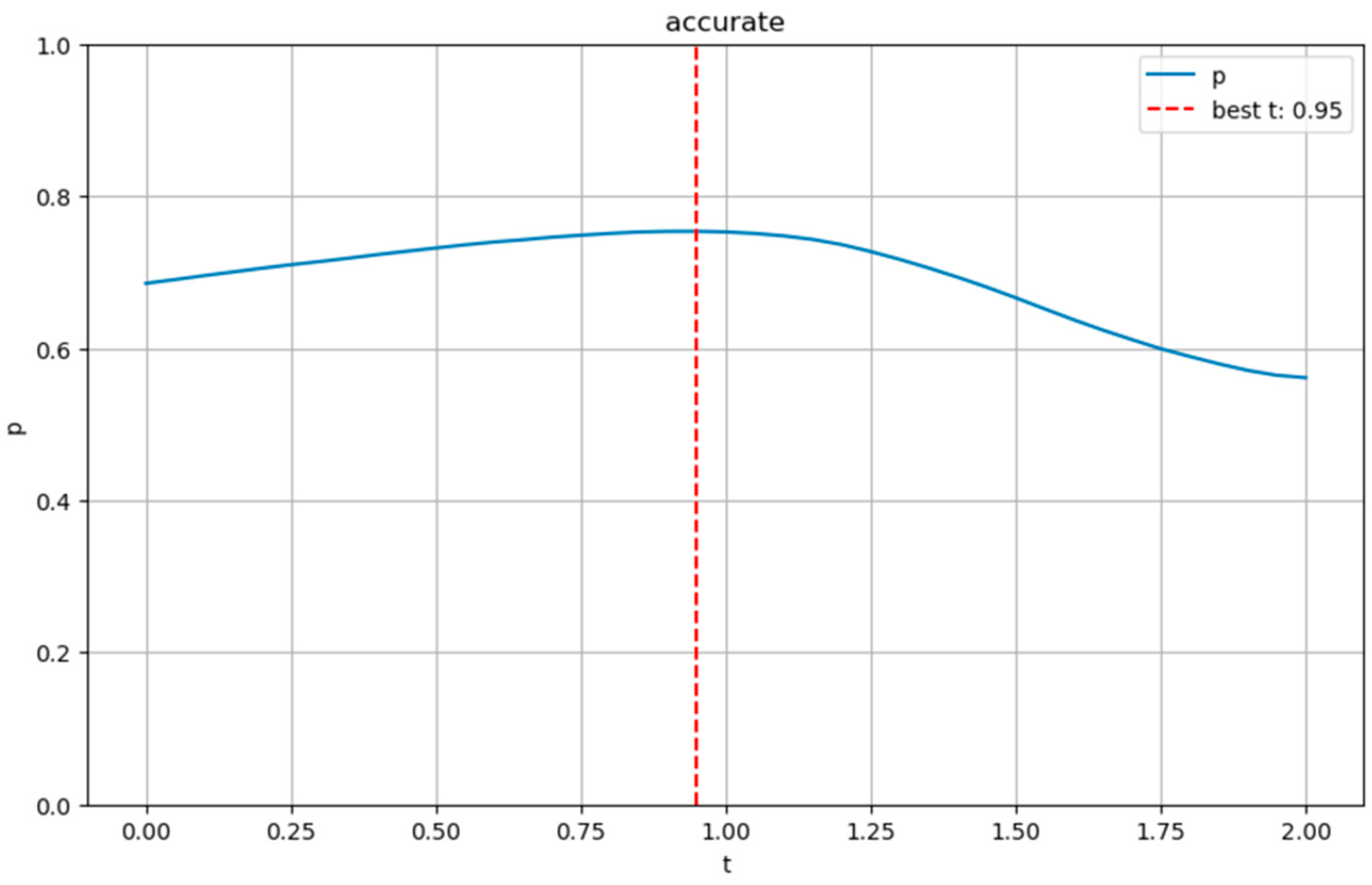
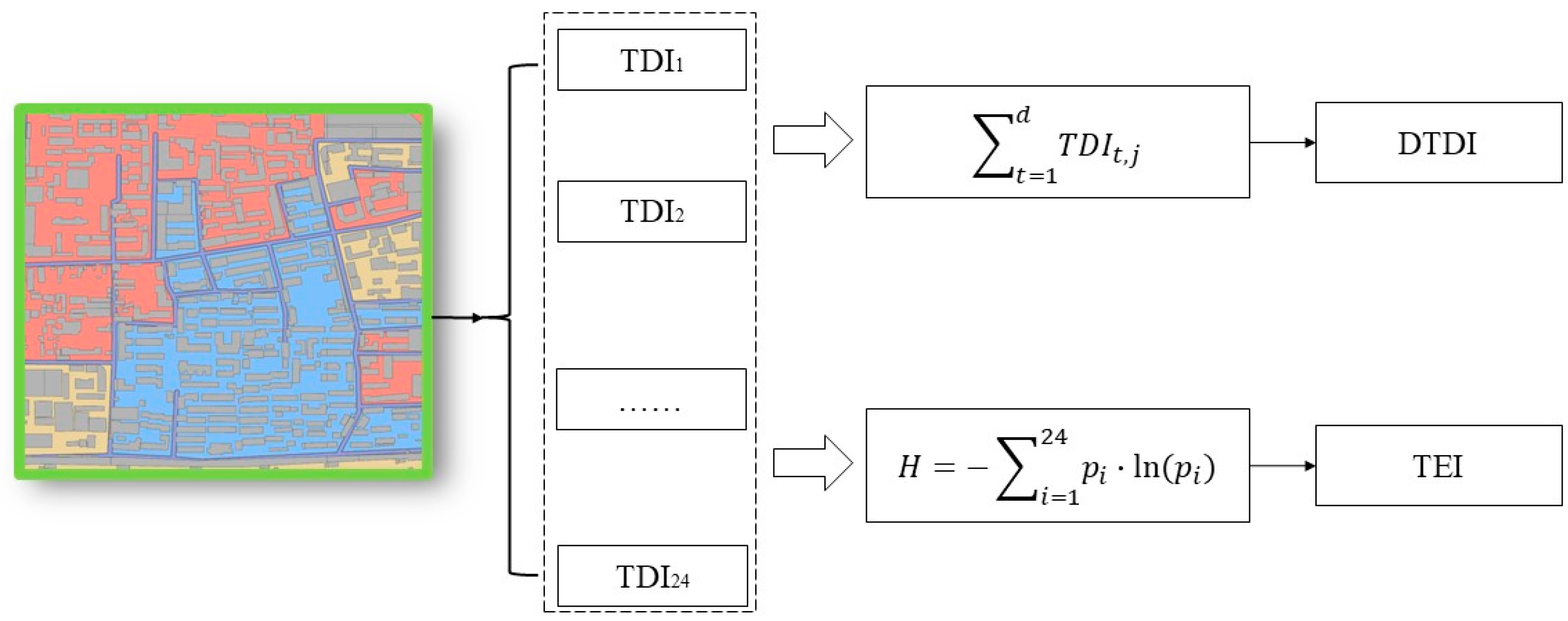
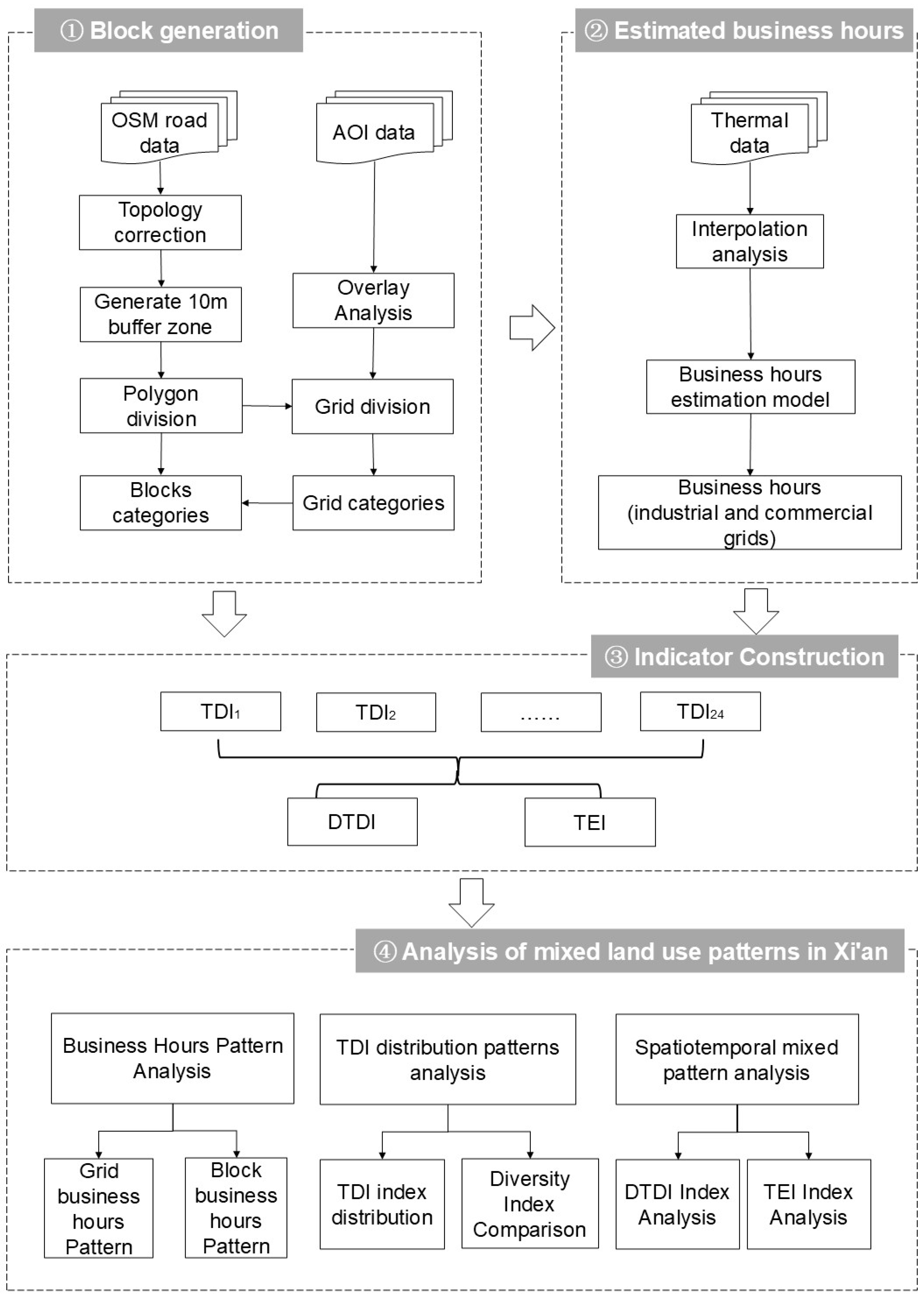
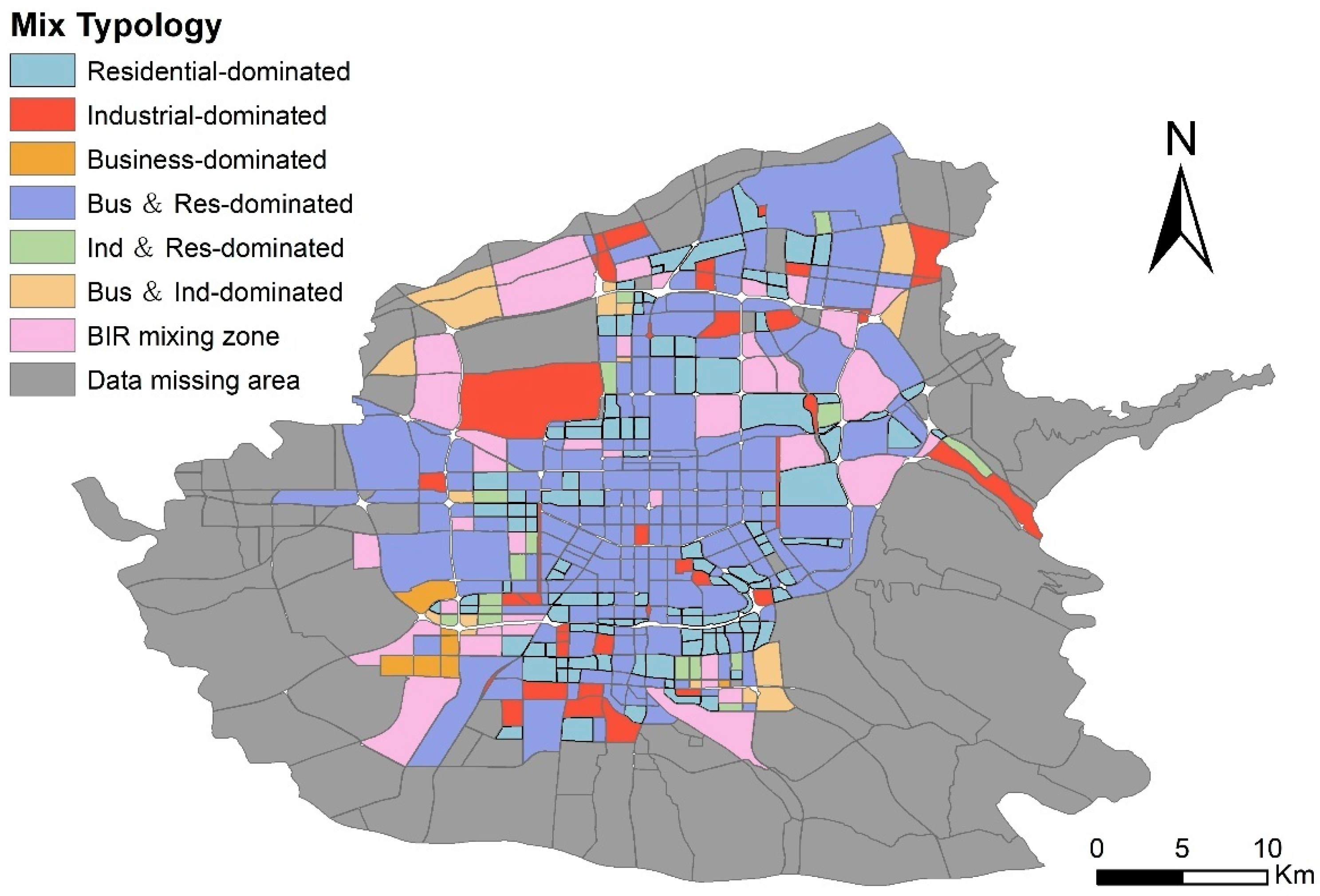
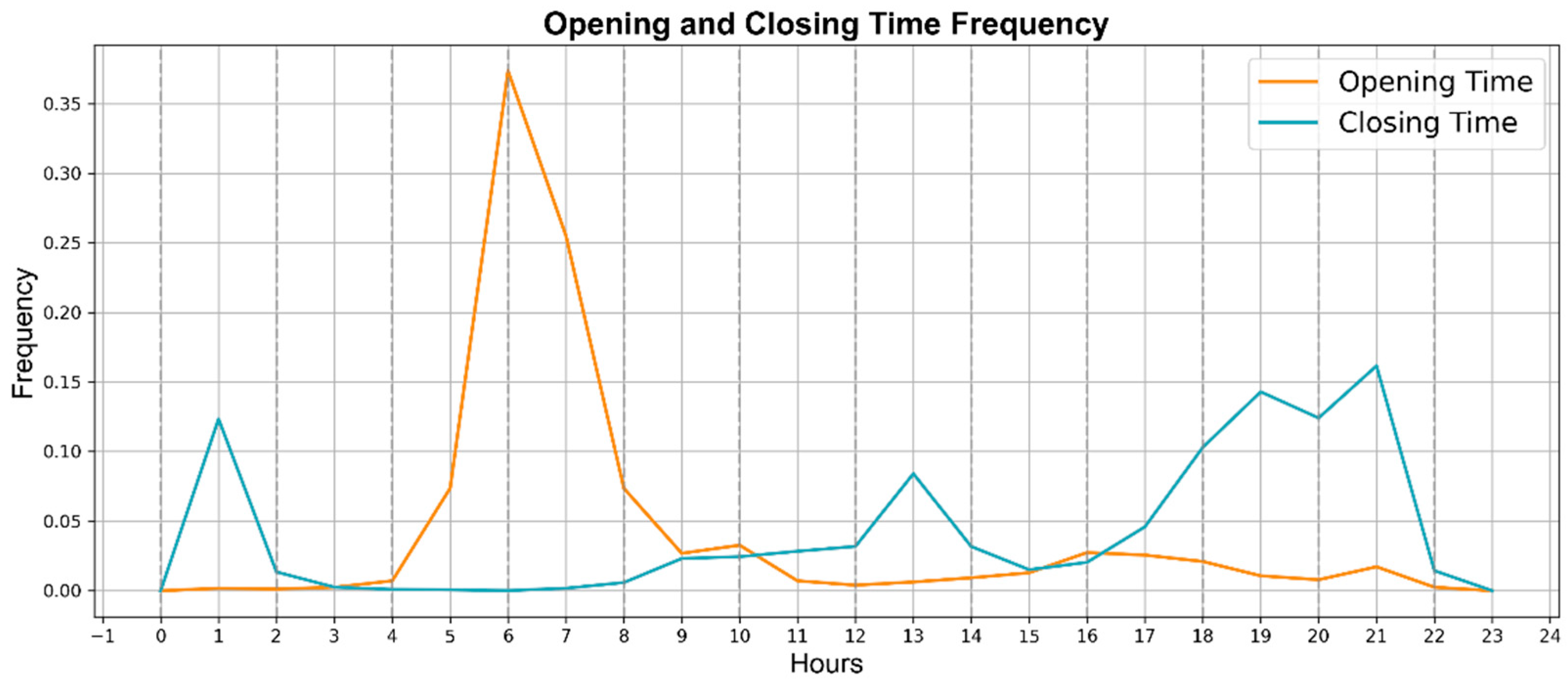
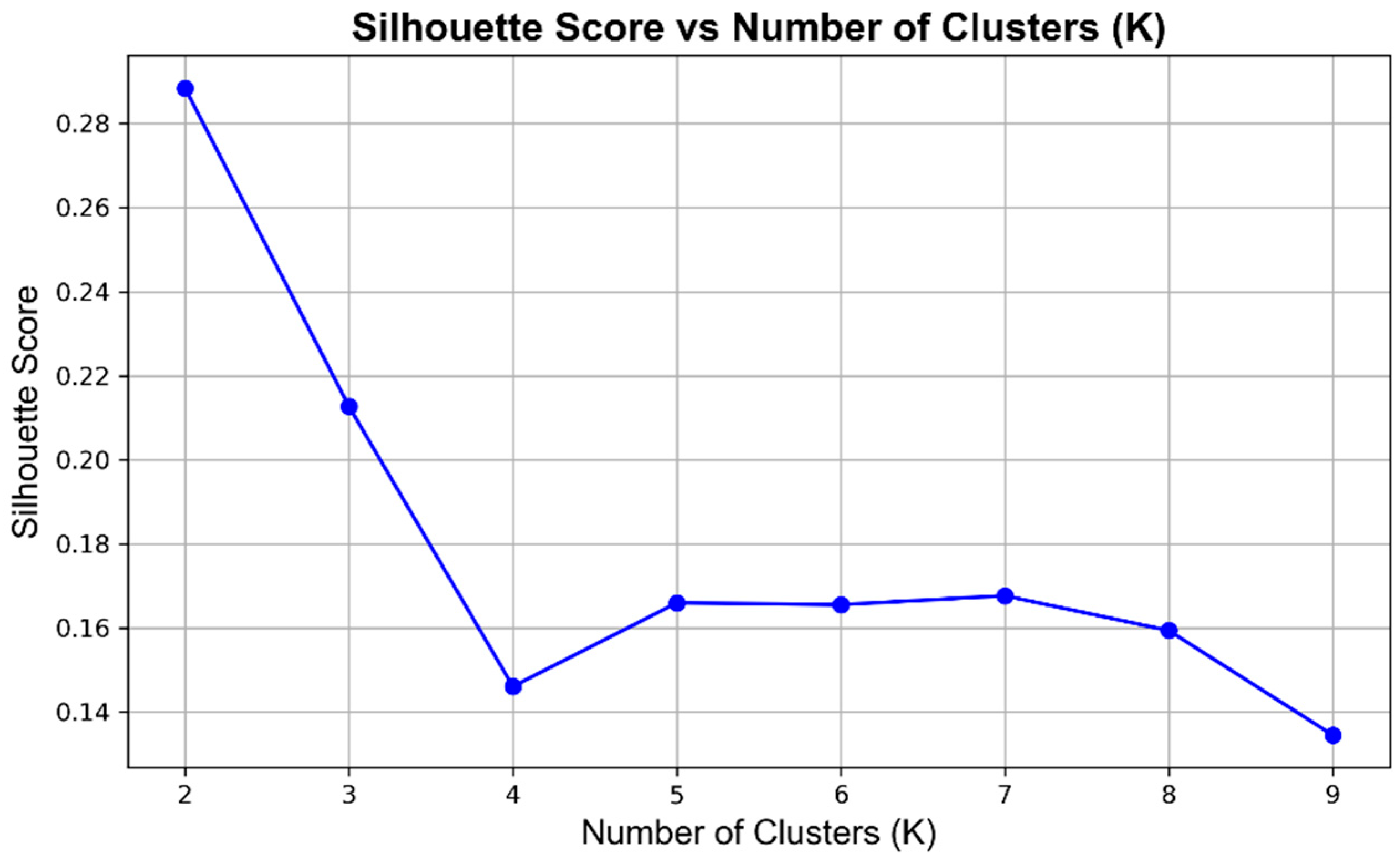
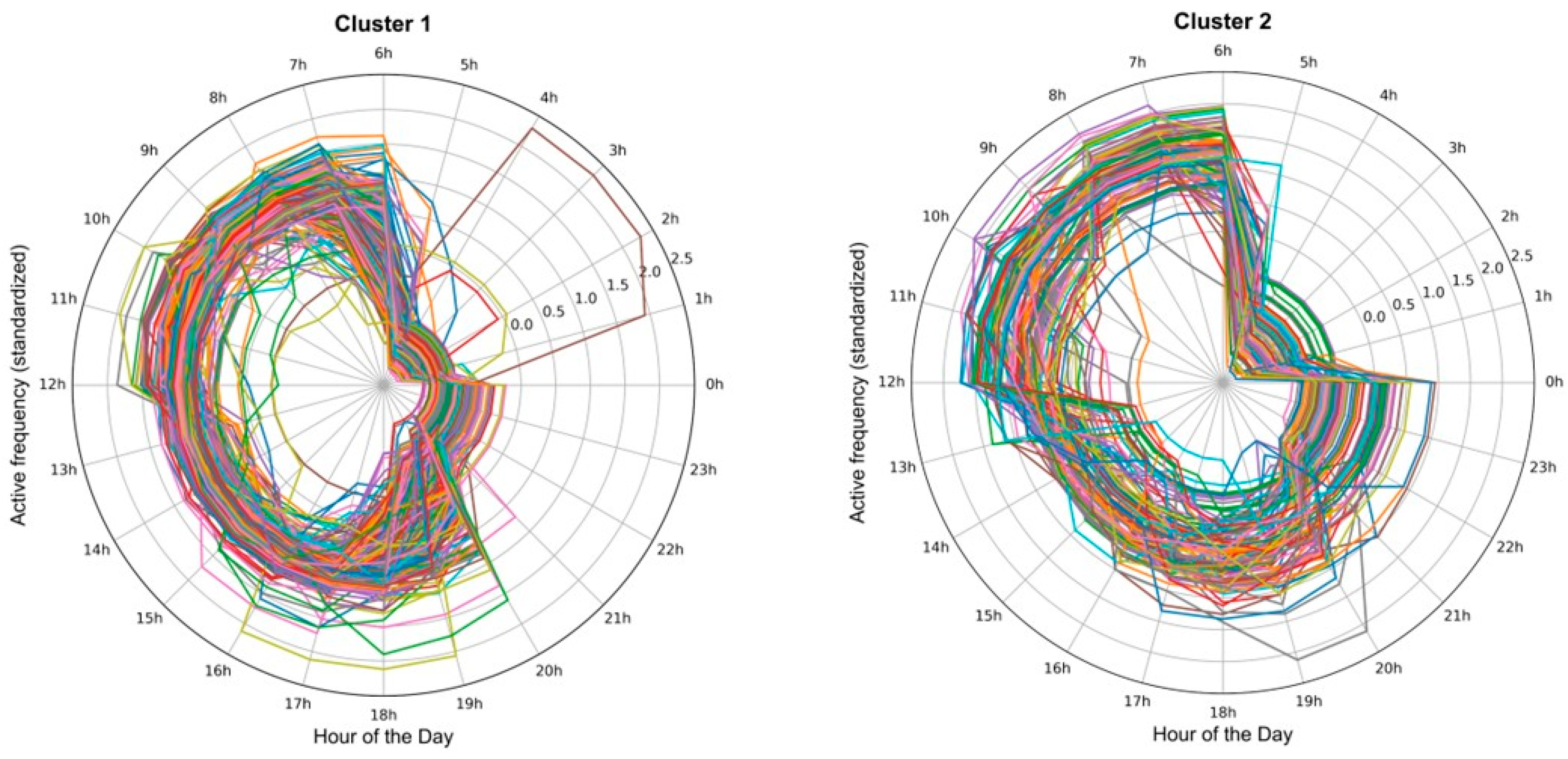
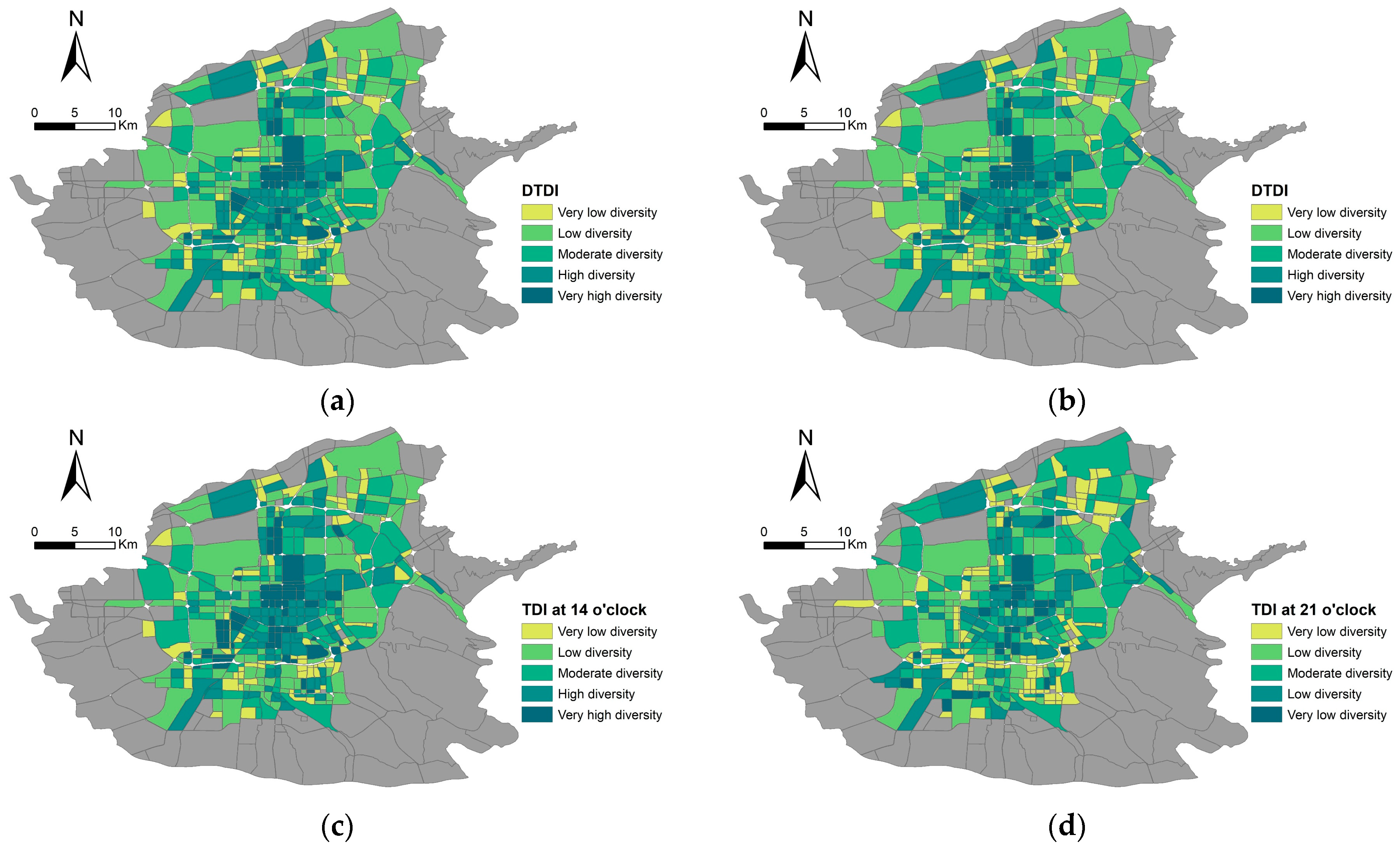
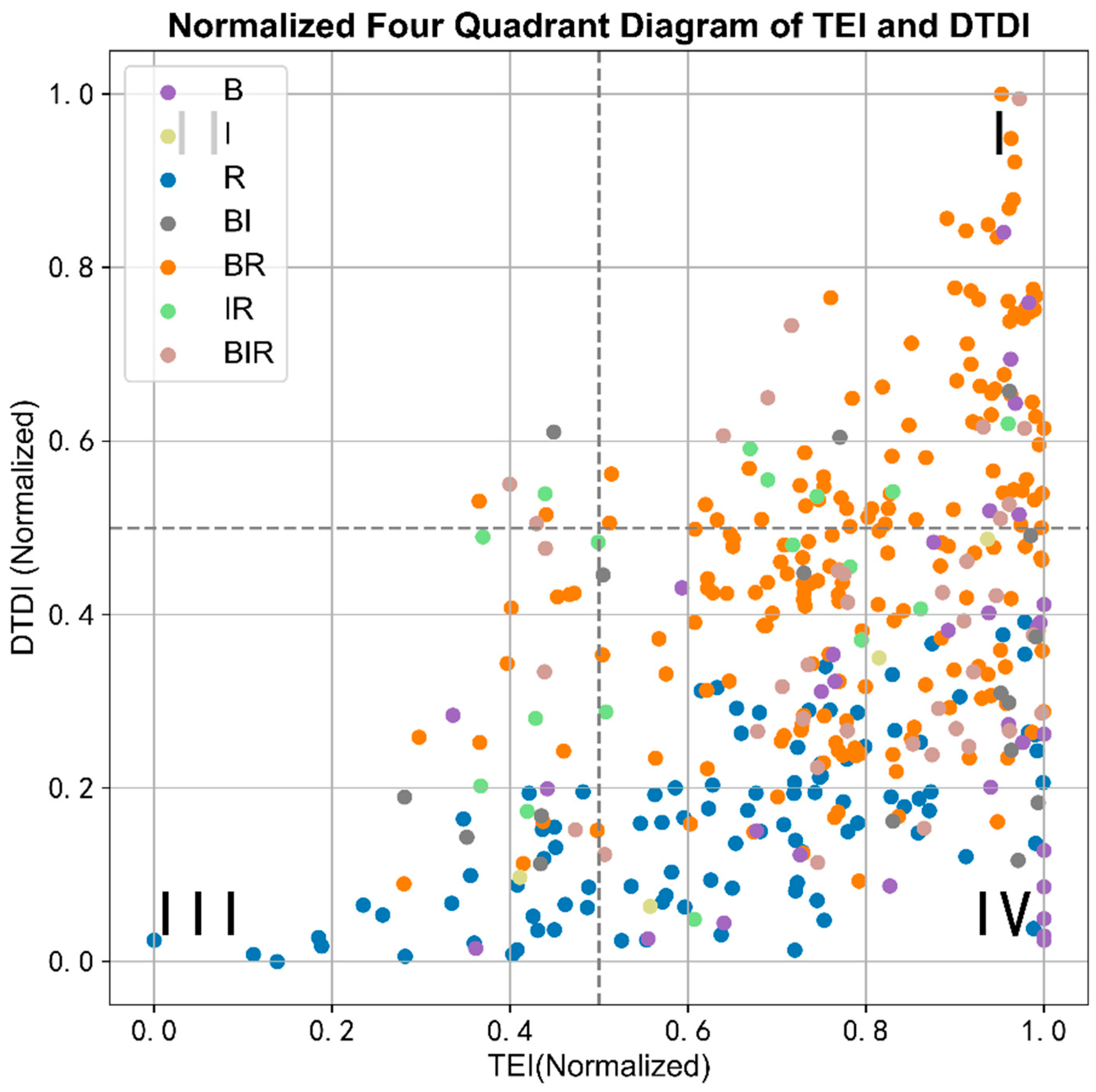
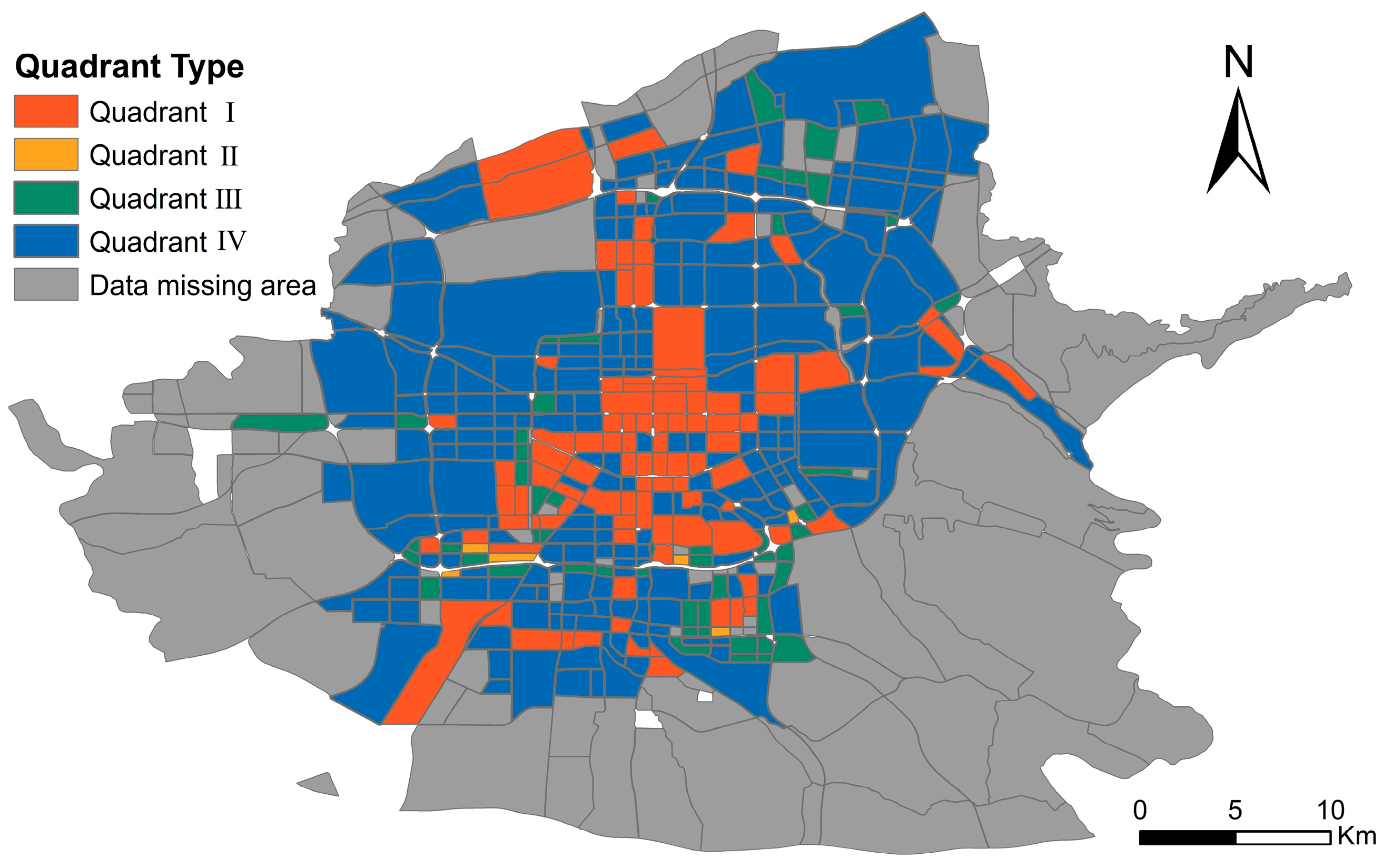
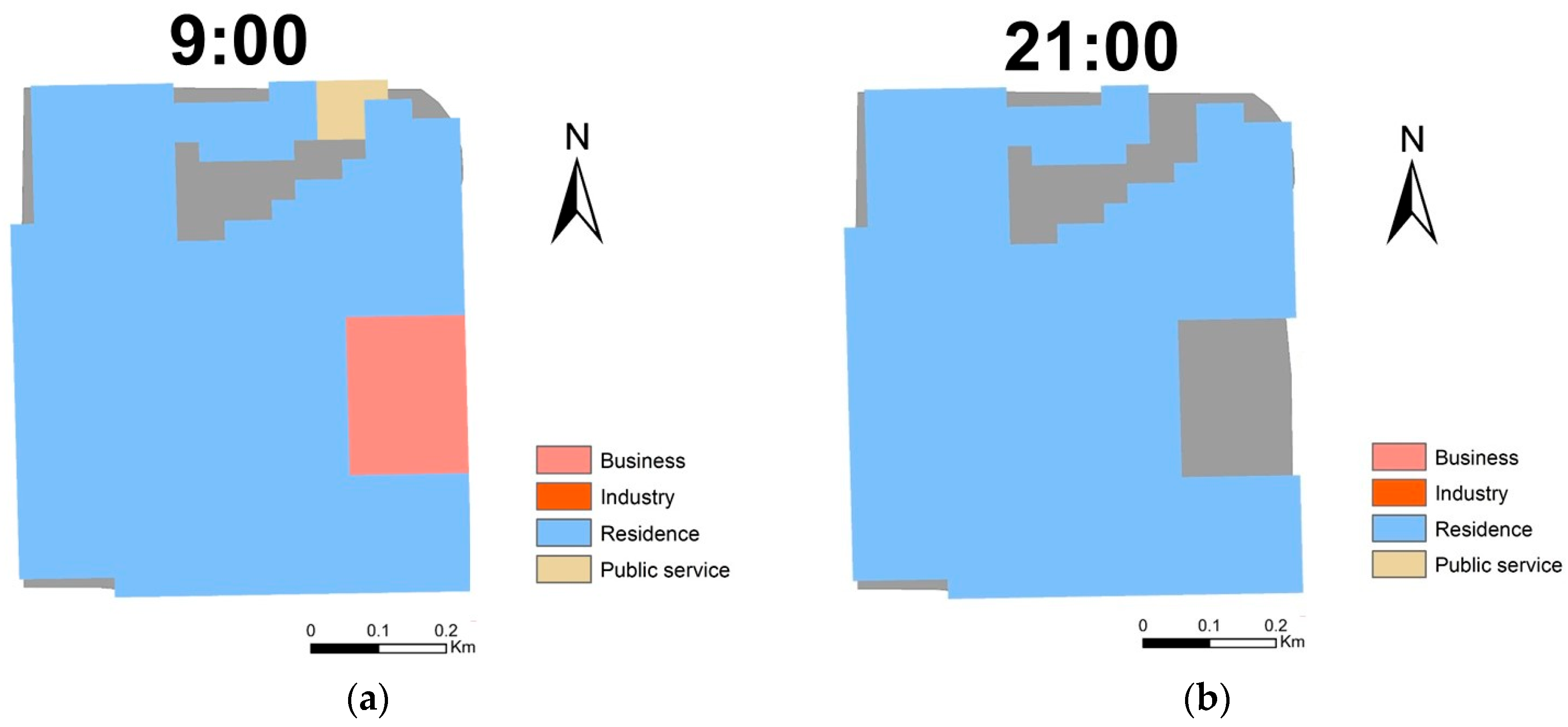


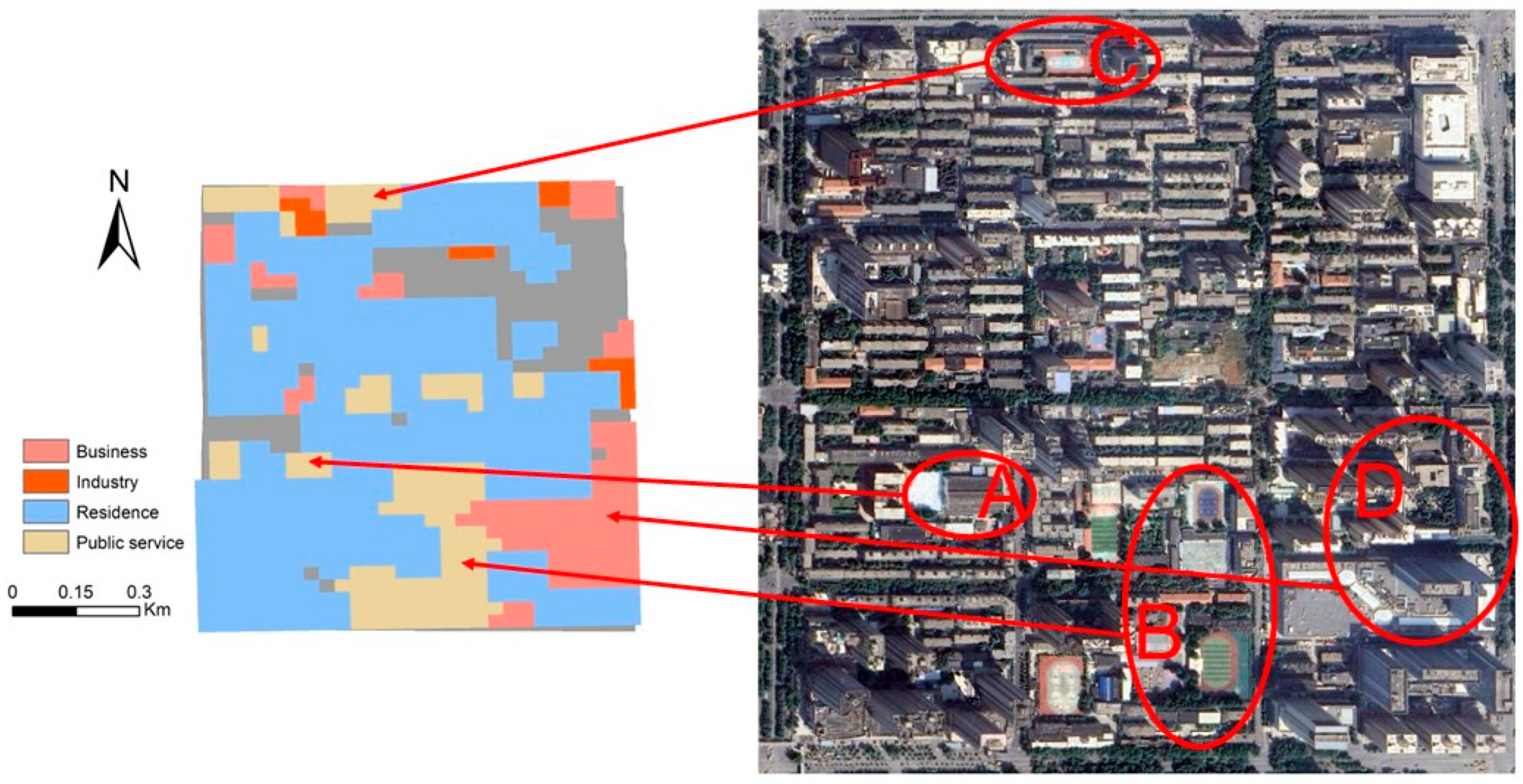
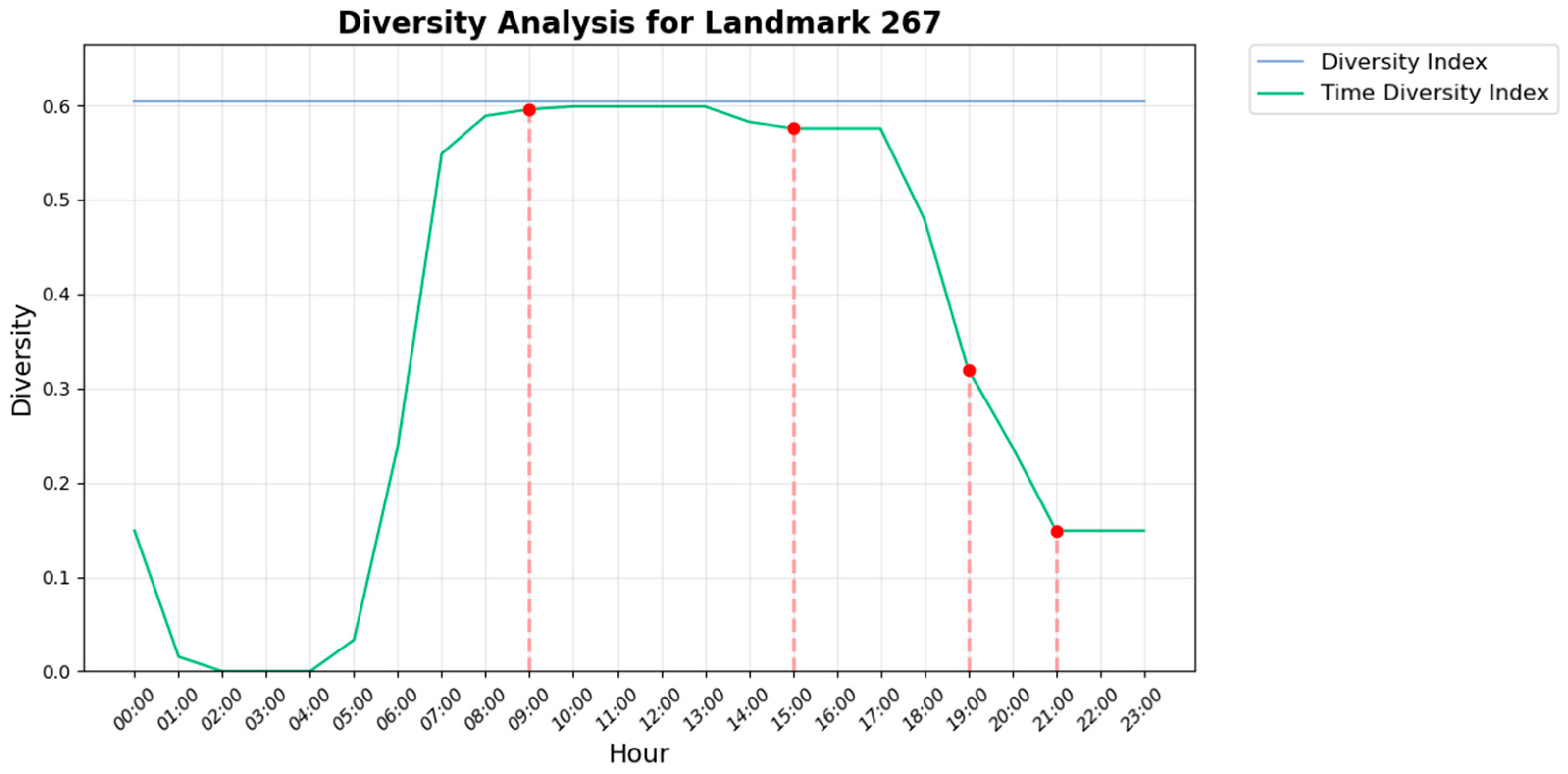
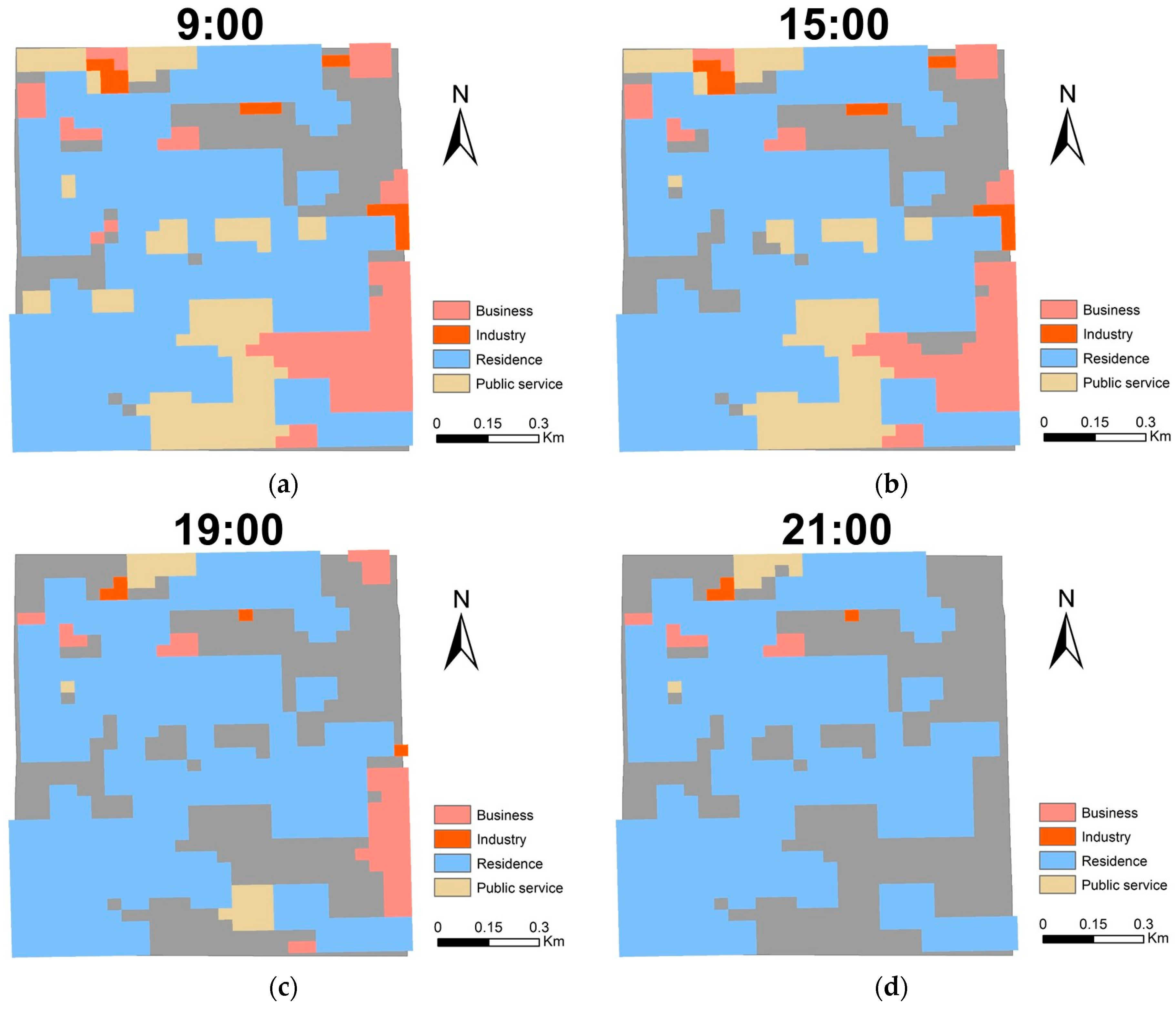
| Form | Classification at the First Level | Classification at the Second Level | Quantities |
|---|---|---|---|
| Business | Business | 4 s services, Media organizations, Shopping complexes, Financial services, Hotel accommodation, Gourmet food and Drinks, Agriculture, Forestry, Animal husbandry and Fishery bases, Training institutes, Automobile services, Automobile maintenance, Commercial buildings (buildings), Living services, Sports venues (golf, golf-related), Entertainment and Recreation, No major category (sports and recreation service venues), Commercial buildings (industrial parks (logistics, logistics and express)) | 6842 |
| Transportation | Road information, Transportation facilities (bus stops, train stations, parking lots) | 518 | |
| Land for public administration and public services | Scientific research institutions, Humanities education, Social organizations, Sports related (sports stadiums, sports venues), Healthcare, Government offices, No major category (science, education, and cultural venues, sports and leisure venues, government and social organizations, government and social organizations related) | 6494 | |
| Green space and plaza | Scenic spots | 865 | |
| Residence | Residence | Residential housing, Business buildings (business housing, business housing related) | 7489 |
| Industry | Industry | Corporate enterprises, Commercial buildings (industrial park), No major category (corporate enterprises) | 2963 |
Disclaimer/Publisher’s Note: The statements, opinions and data contained in all publications are solely those of the individual author(s) and contributor(s) and not of MDPI and/or the editor(s). MDPI and/or the editor(s) disclaim responsibility for any injury to people or property resulting from any ideas, methods, instructions or products referred to in the content. |
© 2025 by the authors. Licensee MDPI, Basel, Switzerland. This article is an open access article distributed under the terms and conditions of the Creative Commons Attribution (CC BY) license (https://creativecommons.org/licenses/by/4.0/).
Share and Cite
Hu, Y.; Chen, H.; Yang, X.; Cui, Y.; Cui, T.; Fang, W. Mixed Temporal Measurement of Land Use Based on AOI Data and Thermal Data. Land 2025, 14, 1457. https://doi.org/10.3390/land14071457
Hu Y, Chen H, Yang X, Cui Y, Cui T, Fang W. Mixed Temporal Measurement of Land Use Based on AOI Data and Thermal Data. Land. 2025; 14(7):1457. https://doi.org/10.3390/land14071457
Chicago/Turabian StyleHu, Yiyang, Hongfei Chen, Xiping Yang, Yuzheng Cui, Tianxiao Cui, and Wenqing Fang. 2025. "Mixed Temporal Measurement of Land Use Based on AOI Data and Thermal Data" Land 14, no. 7: 1457. https://doi.org/10.3390/land14071457
APA StyleHu, Y., Chen, H., Yang, X., Cui, Y., Cui, T., & Fang, W. (2025). Mixed Temporal Measurement of Land Use Based on AOI Data and Thermal Data. Land, 14(7), 1457. https://doi.org/10.3390/land14071457






